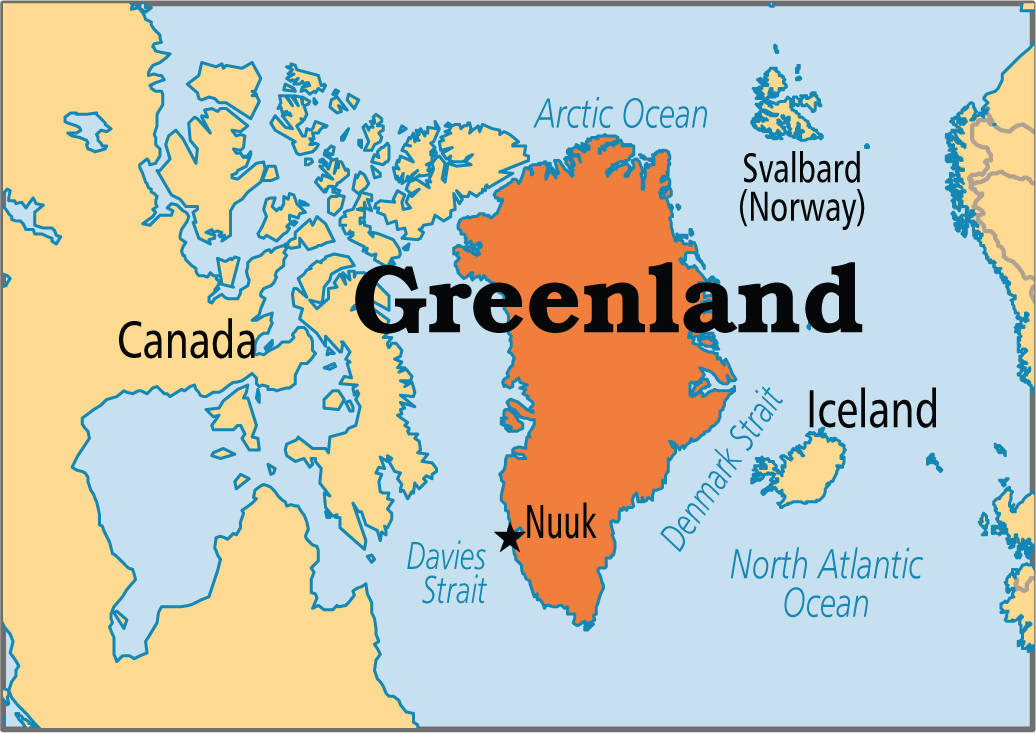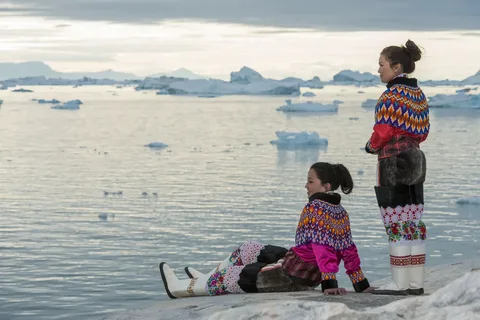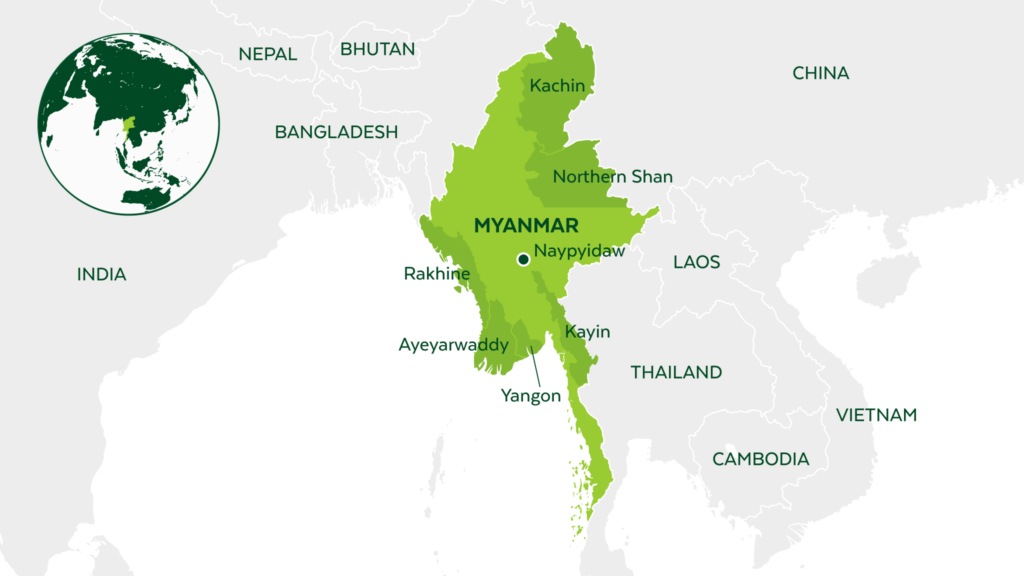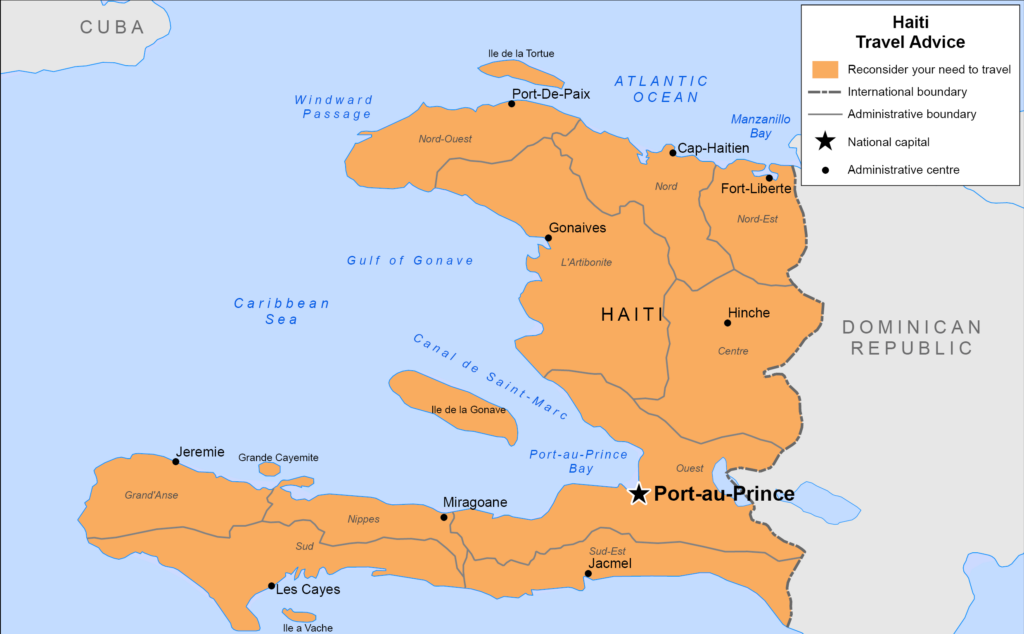Introduction
Greenland, an autonomous territory within the Kingdom of Denmark, is located between the Arctic and Atlantic Oceans. Known for its vast ice sheet and rugged terrain, Greenland offers a blend of Inuit culture, unspoiled wilderness, and unique geological features.
Geography and Climate
Geographic Location
Greenland is situated to the northeast of North America and is bordered by the Arctic Ocean to the north, the Greenland Sea to the east, the North Atlantic Ocean to the southeast, and Baffin Bay to the west. The island lies between latitudes 59° and 83°N and longitudes 11° and 74°W.
Topography
Greenland’s topography is dominated by its massive ice sheet, which covers about 80% of the island and is second only to Antarctica in size. The ice sheet has an average thickness of approximately 2,135 meters. Coastal areas feature fjords, mountains, and glaciers, with the highest point being Gunnbjørn Fjeld at 3,694 meters.
Climate
Greenland experiences an Arctic to subarctic climate, characterized by long, harsh winters and short, cool summers. The climate varies significantly between regions
- Northern Greenland: Extreme Arctic climate with temperatures often below freezing year-round.
- Central Greenland: Dominated by the ice sheet, with extremely cold temperatures and heavy snowfall.
- Southern Greenland: Subarctic climate with milder temperatures in summer and less severe winters.
Biodiversity
Despite its icy landscape, Greenland is home to diverse wildlife, including polar bears, arctic foxes, reindeer, and various species of seals and whales. Birdlife is also abundant, with species such as puffins, ravens, and sea eagles.
Historical Background
Early Inhabitants
The earliest known inhabitants of Greenland were the Paleo-Eskimo peoples, who migrated from Canada around 2500 BCE. They were followed by the Dorset culture and later the Thule people, ancestors of the modern Inuit.
Norse Exploration
In the late 10th century, Norse explorers, led by Erik the Red, settled in Greenland. They established colonies along the southwestern coast, which thrived for several centuries before mysteriously disappearing by the late 15th century.
Colonial Era
Greenland became a Danish colony in 1721, following missionary expeditions led by Hans Egede. Denmark gradually expanded its influence, and in 1953, Greenland was officially integrated into the Kingdom of Denmark.
Modern History
In 1979, Greenland was granted home rule, followed by increased autonomy in 2009. Today, Greenland manages most of its domestic affairs while Denmark retains control over foreign policy and defense.
Political Structure
Government
Greenland is an autonomous territory within the Kingdom of Denmark. It has its own parliament, the Inatsisartut, and government, Naalakkersuisut. The head of government is the Premier, while the Danish monarch remains the head of state.
Administrative Divisions
Greenland is divided into five municipalities
- Avannaata: Northern Greenland
- Kommuneqarfik Sermersooq: Eastern and southwestern Greenland, including the capital, Nuuk
- Qeqertalik: Western Greenland
- Qeqqata: Central-western Greenland
- Kujalleq: Southern Greenland
International Relations
While Denmark handles Greenland’s foreign affairs and defense, Greenland actively participates in international organizations such as the Arctic Council and maintains a focus on environmental and indigenous issues.
Economy
Overview
Greenland’s economy is small and primarily based on natural resources, fishing, and subsidies from Denmark. The country is working towards economic diversification and sustainable development.
Fishing Industry
Fishing is the backbone of Greenland’s economy, accounting for over 90% of exports. Key species include shrimp, halibut, and cod. The industry faces challenges related to climate change and sustainable practices.
Natural Resources
Greenland has significant mineral resources, including rare earth elements, iron ore, and precious metals. Oil and gas exploration is also a potential growth area, although environmental concerns pose challenges.
Tourism
Tourism is a growing sector, driven by Greenland’s unique natural beauty, adventure tourism, and cultural experiences. Popular activities include iceberg cruises, dog sledding, and visits to Inuit communities.
Economic Challenges
Greenland faces economic challenges such as high transportation costs, reliance on imports, and a small domestic market. Efforts are ongoing to attract foreign investment and develop new industries.
Culture and Society
Inuit Heritage
Greenland’s culture is deeply rooted in Inuit traditions, including hunting, fishing, and a close connection to the natural environment. Traditional practices such as kayaking, dog sledding, and seal hunting remain integral to Greenlandic identity.
Language
The official language of Greenland is Greenlandic (Kalaallisut), an Inuit language. Danish and English are also widely spoken, particularly in business and education.
Religion
Christianity, specifically the Evangelical Lutheran Church, is the predominant religion in Greenland. However, traditional Inuit spiritual beliefs continue to influence cultural practices and community life.
Festivals and Traditions
Greenland celebrates several unique festivals and traditions
- National Day (June 21): Marking the summer solstice, with cultural events and celebrations across the country.
- Arctic Winter Games: A biennial event featuring sports and cultural activities from Arctic regions.
- Ullortuneq (Greenlandic New Year): Celebrated with fireworks, traditional music, and community gatherings.
Tourist Attractions
Ilulissat Icefjord
A UNESCO World Heritage site, the Ilulissat Icefjord is renowned for its stunning icebergs and dramatic landscapes. Visitors can explore the fjord by boat, hike along the marked trails, or take helicopter tours for aerial views.
Nuuk
Greenland’s capital, Nuuk, offers a blend of modern amenities and traditional culture. Key attractions include the Greenland National Museum, the Katuaq Cultural Centre, and the picturesque Old Harbor.
Eastern Greenland
Known for its rugged beauty and remote communities, Eastern Greenland is a paradise for adventure seekers. Activities include ice climbing, kayaking through fjords, and visiting traditional Inuit villages.
Southern Greenland
Southern Greenland is famous for its lush landscapes, Norse ruins, and hot springs. The area around Qaqortoq features beautiful fjords, while the Hvalsey Church Ruins offer a glimpse into Greenland’s Viking past.
Disko Bay
Disko Bay is a popular destination for whale watching, iceberg viewing, and exploring small settlements like Ilulissat and Aasiaat. The bay’s diverse wildlife and stunning scenery make it a highlight for visitors.
Maps of Greenland
Political Map
A political map of Greenland highlights the five municipalities, key towns and settlements, and major geographic features. It also shows Greenland’s position relative to the Arctic Circle and neighboring countries.
Topographical Map
A topographical map provides detailed information on Greenland’s physical landscape, including mountain ranges, ice sheets, fjords, and valleys. It is essential for understanding the island’s diverse and rugged terrain.
Road Map
Greenland has limited road infrastructure due to its vast and challenging terrain. A road map typically focuses on the road networks within and around major settlements, such as Nuuk and Sisimiut.
Tourist Map
A tourist map highlights key attractions, adventure routes, and points of interest. It is a valuable resource for planning travel itineraries and exploring Greenland’s unique destinations.
Fun and Interesting Facts
- Largest Island: Greenland is the world’s largest island, with an area of over 2.16 million square kilometers.
- Ice Sheet Coverage: Approximately 80% of Greenland is covered by an ice sheet, second only to Antarctica in size.
- Lowest Population Density: Greenland has one of the lowest population densities in the world, with around 56,000 people living on the vast island.
- Northern Lights: Greenland is one of the best places to view the Northern Lights, with optimal viewing conditions from September to April.
- Whale Watching: Greenland’s waters are home to numerous whale species, including humpback, minke, and blue whales, making it a prime location for whale watching.
- Longest Fjord: Scoresby Sund, located on the eastern coast of Greenland, is the world’s longest fjord, stretching over 350 kilometers.
- These Ancient Archaeological Finds Changed History! - August 20, 2024
- The Secrets Of Ancient Egypt! - August 19, 2024
- The Great Abandoned Iberian City Of Ullastret! - August 18, 2024





